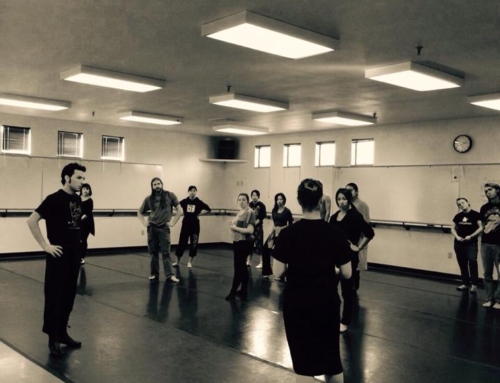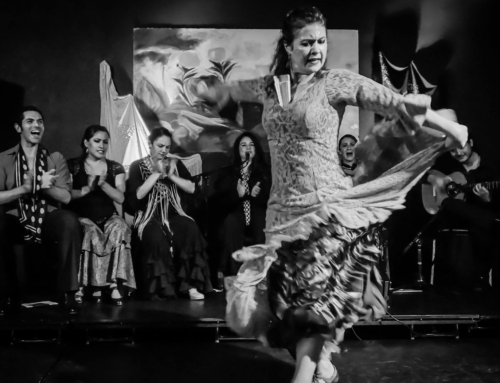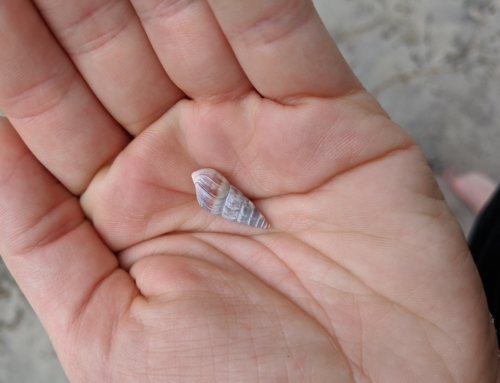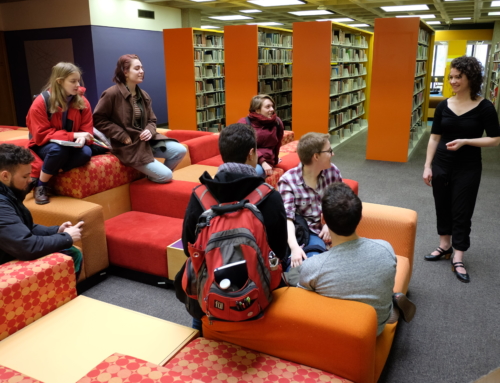What do you do when you have no space to lie down and stretch on, or a floor to warm up your feet on, and you’ve got a big performance to get ready for?
| At the Delacorte Theater in Central Park, dancing in the The Public Theater’s production of The Odyssey with Flamenco Vivo. |
This is a problem I face on a weekly basis. Most of my gigs in NYC do not have a space for me to warm up in. Restaurants usually have a small stage, that we don’t stand on until the show starts–it’s not great etiquette to warm up in front of your audience. Sometimes there is no back room or office for us to use. In my most frequent gig, there’s barely room for us to stand before the gig starts. And this past weekend, performing at the Delacorte theater in Central Park, our backstage area was a tent on top of asphalt, with raccoons just a few feet away riffling through the trash…
 |
| Can you spot the raccoons in the trash bins? …That’s right behind our dressing “room.” |
So how does a dancer warm up when there seems to be nowhere to warm up? There’s actually a lot you can do–mostly dynamic stretches, which dance physical therapists recommend as the best way to warm up your muscles.
Key factors of a dynamic warm up:
-Gets your heart pumping & blood circulating [Cardio]
-Fluid, flowy movements; always moving
-Jumping Jacks / Running around the studio
(http://balletshoesandbobbypins.com/know-your-warm-up)
These types of stretches should be done even when you do have a floor to stretch and warm up footwork on. Holding stretches for more than 15 seconds when you’re not warmed up increases your risk of injury, whereas dynamic stretches allow you to safely get blood flowing to your muscles, preparing your body to move. Stretches that are held for long periods of time should be done in the middle of a workout or after.
I find it also helps to do exercises that ground me–squats and releves, so that I have a strong connection to the floor. And I find twisting and spiraling my spine really helps me warm up my core. Irene Dowd, dance anatomist extraordinaire also taught me various standing exercises that involve twisting and lengthening the core.
It can also be great to do exercises that increase your spatial awareness, such as moving your limbs in relation to a center point, or in relation to one another, so that your mind’s eye warms up the awareness of the body.
How do I know all this? Mostly from firsthand experience–visiting physical therapists who specialize in dance when I was injured and just figuring out what works best. And this year in my MFA at Hollins University, I learned a ton of anatomy, formally studying the science behind movement, making me appreciate even more the incredible instruments that are our bodies.
Here’s to healthy dancing!!!!
And here’s a link to the Harkness Center for Dance Injury, a great resource for preventing injury! http://www.med.nyu.edu/hjd/harkness/quality-healthcare-dance-community










Leave A Comment